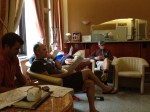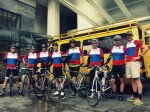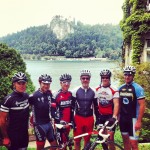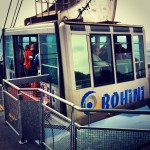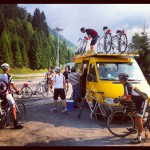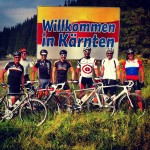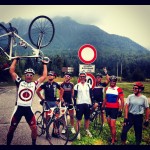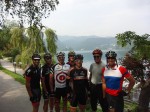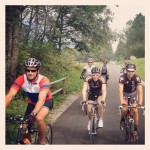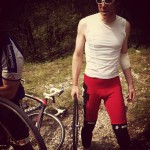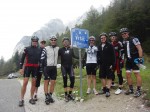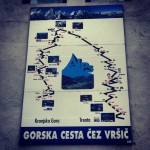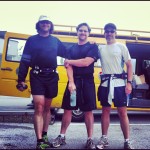With isocket, programmatic is taking a bite out of the big side of the pie
For about the past 18 months I’ve been talking about the coming of programmatic technologies (machine to machine buying and selling) to the premiums side of the display ecosystem. It was one of my “2012 AdTech Predictions” published last year in AdExchanger and I expanded on that prediction in a piece earlier this year, also in AdExchanger.
The basic idea is simple. Programmatic technology has made a huge difference in online advertising – bringing down transaction costs, allowing for better audience and content targeting, enabling publishers to better manage their inventory while at the same time allowing advertisers to make better buying decisions (not to mention spot ad buys). It’s been a great addition to the ad stack and for Foundry a solid area for investment (our two companies that play directly into this trend are AdMeld, which was purchased by Google late last year, and Triggit, the leading onramp to the Facebook exchange and growing extremely rapidly). Both AdMeld and Triggit – as well as almost all of the other companies that play in programmatic – are focused on non direct sold or remnant inventory. This was a logical place for programmatic technologies to be first applied. Publishers were more focused on the direct sold side of their business since that was where the large dollars were. And the marginal cost for a single impression (and therefore the cost of getting something wrong) was relatively low. At the same time, there was a huge volume of remnant impressions that were available to this ecosystem and because of the way these impressions had traditionally been grouped together for buys by the ad networks, there were significant targeting efficiencies to be gained by adding a software layer to this buying process (allowing more impression and user level information to pass through the system as well as opening up those impressions to multiple bidders through real time bidding).
Fast forward to today and because of these efficiencies and better targeting capabilities programmatic in general and RTB in particular has taken off even faster than most industry observers (myself included, although we’ve been the happy recipient of this trend) ever expected. But how can these same marketplace rules apply to the other side of the inventory equation – those high value impressions that are sold directly by a publisher’s sales force? This buying process is still handled manually, by fax and email primarily, adding complexity and cost to the process that is almost hard to imagine (which is one of the reasons that other forms of brand advertising remain in much greater favor than online). Dealing with premium inventory is a different beast and requires different technology and different rules of transacting than remnant. But the benefits in terms of marketplace fluidity, reach, scope and efficiency have an even greater potential on this side of the market.
I first met John Ramey from isocket about a year ago. We started talking about 16 months ago – after I had started thinking about the coming of programmatic guaranteed but before I was making much noise talking about it. isocket was well on their way building products and the isocket marketplace to go after this market. Over the months we’ve spent time together trading ideas about how this side of the business was likely to evolve, updating me on the progress of isocket, letting me know which ex-AdMelders he was bringing on board, etc. I’ve come away from each of our conversations more and more impressed with the platform isocket is building and more and more convinced that we wanted to have a chip on the table in programmatic guaranteed. John has surrounded himself with an impressive group of advisors, including James Beriker of Efficient Frontier and Dapper who will be joining me on the isocket board.
I’m extremely excited to be working with John and the isocket team and look forward to building a great business together. You can read the full isocket release here (which also talks about the launch of the BuyAds Pro product, the addition of James Beriker formerly of Efficient Frontier and Dapper to the isocket board as well as the addition of Mark Liao from Yahoo as CFO). Exciting times!
Introducing Colorado Entrepreneurial By Nature
 When it comes to the question of nature vs. nurture for entrepreneurs it’s clear that both are important. While great entrepreneurs are born with at least the seed of that entrepreneurial spirit, it takes some encouraging – as well as plenty of guidance, help and support – to see that seed blossom. I’ve had the great fortune to experience the evolution and transformation of Colorado into a community that I believe is one of the most supportive of entrepreneurs anywhere in the country. In fact, Colorado has always had an entrepreneurial spirit – from before its founding as a state as a frontier territory supporting prospectors and pioneers, through its history of ranching, the oil and gas boom, as a hub for telecommunications start-ups, to its leadership in LOHAS businesses and the burgeoning green-tech field, to Internet and related technologies. Surrounding these business trends has been a Rocky Mountain lifestyle that has attracted entrepreneurs to our state since the 1800’s. These factors, combined with a support structure and philosophy of paying it forward, has turned Colorado into one of the best places in the country to start a business.
When it comes to the question of nature vs. nurture for entrepreneurs it’s clear that both are important. While great entrepreneurs are born with at least the seed of that entrepreneurial spirit, it takes some encouraging – as well as plenty of guidance, help and support – to see that seed blossom. I’ve had the great fortune to experience the evolution and transformation of Colorado into a community that I believe is one of the most supportive of entrepreneurs anywhere in the country. In fact, Colorado has always had an entrepreneurial spirit – from before its founding as a state as a frontier territory supporting prospectors and pioneers, through its history of ranching, the oil and gas boom, as a hub for telecommunications start-ups, to its leadership in LOHAS businesses and the burgeoning green-tech field, to Internet and related technologies. Surrounding these business trends has been a Rocky Mountain lifestyle that has attracted entrepreneurs to our state since the 1800’s. These factors, combined with a support structure and philosophy of paying it forward, has turned Colorado into one of the best places in the country to start a business.
Today we’re launching Colorado Entreprenurial by Nature – a grass roots campaign created by a handful of entrepreneurs in our community to show support of that ecosystem. The goal is simple. We’re giving members of our community an easy way of showing their pride in the entrepreneurial community we’re building in our state. We hope that this will help us both encourage entrepreneurship in our community and attract new entrepreneurs to come to Colorado to start their businesses.
Joining is easy. Head to the Colorado Entrepreneurial by Nature website and download the badge (it comes in a number of different colors and sizes). Display it proudly on your company or personal website. We’ve made some stickers up as well which you can fly proudly on your laptop/car/bike/etc. They’ll be showing up around Denver and Boulder at a handful of coffee shops and other places where entrepreneurs congregate.
If you feel the way I do about Colorado – about living here and working here to support entrepreneurship – I hope you’ll join me in the movement.
Accomplishment vs. Success
I had a great conversation with an entrepreneur the other day talking about the difference between accomplishment and success. Accomplishment is what happens on the road to success, but declaring something a “success” vs. recognizing that it’s simply one of a handful of requirements to get to success. And of course viewing something this way changes the lens through which you consider that accomplishment and can significantly change decisions you make because of it. Think of it like drawing a line through a single point (or even a couple of relatively closely grouped points) – it’s easy to delude yourself into thinking you’re on one path before you actually have the data to prove it. And for a start-up, this can mean spending precious resources inefficiently, before you realize what line you’re really on. I’ve lived through this so many times (as has the entrepreneur I was talking with), plowing full speed ahead without recognizing that we had blinders and only later realizing (after wasting a bunch of money) that we misinterpreted some early accomplishment as successfully having figured something out (which we hadn’t).
That convert you raised last year is a part of your cap table
When it comes to convertible debt, I’ve had a few instances recently where “out of sight, out of mind” has created some misunderstandings around deal structures. Seemed like a good topic to cover here.
Given the prevalence of convertible debt as a seed financing instrument, an increasing number of companies we look at have some kind of convert in place. This is typically reflected on cap tables in a completely separate tab to the spreadsheet that shows the debt total by investor and then some kind of interest calculation. Of course many entrepreneurs naturally focus on the main tab of their cap table spreadsheet that shows ownership by founder, investor, etc and for them this is the starting point of negotiating a round. The problem, of course, is that their convert is already a part of their capitalization – even though it’s not reflected on the cap table. There’s nothing nefarious here on the part of entrepreneurs, but I’ve recently been involved in a few situations where this key fact was skipped over and as a result their expectations for their ownership/total dilution of a subsequent equity round was completely wrong and because of that a deal (at least with us) didn’t come together (in one case the entrepreneurs viewed the convert as a post equity deal event, meaning that they thought they were negotiating a round with us that would then layer on the debt conversion – exactly the oppositie of how it actually works!).
When you raise $2M on a convert with a $6M cap you’ve sold 25% of your company (at least; 25% if this converts at the cap). And while your cap table may not yet reflect this in the numbers, your 40% founders equity stake is actually already 30% when you start the process of raising your equity round. It’s worth going through the math explicitly, as convert terms like this can have a significant effect on the total cap table. This is especially true when the round price is significantly higher than the convert cap. Raise $6M on an $18M pre and you think you’re selling 25% of the company. But factor in that convertible debt above and you’re actually taking more like 50% dilution from the ownership reflected on your pre-convert cap table. Not necessarily a bad deal, but if you didn’t have that in your head you’re setting yourself up for a big surprise. And keep in mind that the equity round will price in the convert (so in my example above the $18M pre includes the conversion of debt – but because the conversion price is capped, from a dilution perspective $4.5M of the pre-money is actually the debt conversion).
The math all adds up in the end – but make sure you’re thinking it through all the way.
SideTour’s Ultimate NYC Weekend
Today is the last day to enter SideTour’s contest for the ultimate New York Weekend. It’s a great chance to win a really unique weekend in New York from a company whose business is built around helping people find cool and unique experiences (SideTour is a Foundry portfolio company – in case that wasn’t obvious).
#3010
If you’ve been following me on social media I’m sure you noticed a bunch of posts tagged with #3010 at the beginning of September, along with some stunning photos of Slovenia. While it was fun to document the trip this way, it was such an amazing experience, I thought it deserved a full post. This was a trip for my 40th birthday (thus the #3010 hash) and it was truly a once in a lifetime experience.
First let me start out by stating how much my wife Greeley rocks! She’s truly amazing. This trip was her idea and she spent a lot of time and energy making sure it went off smoothly and that everyone was very well taken care of. Everything from arranging the trip logistics to putting together our schwag bags (complete with Tour of Thirty-Ten (spelled out in Slovenian), individually named “Cutters” tee-shirts, to adjusting last minute travel. Not to mention convincing 9 of my good friends to join me and then surprising me with the whole thing. I don’t even have the words to describe how appreciative I am.
We chose Slovenia to get a little off the beaten path in Europe (and I had always wanted to go to the Balkens). And we were not disappointed. Slovenia is a beautiful country with rolling geen hills and high mountains. The people are friendly and very welcoming to visitors. There’s great history and wonderful sight seeing.
Ljubljana. Ljubljana is a beautiful city, the capital of Slovenia. At only about 300,000 residents it’s a pretty managable size. A few years ago they closed off the city center to traffic and as a result its extremely pedestrian friendly with many outdoor cafes and bars. Three bridges mark the center of town and the entire city is watched over by the Ljubljana Castle from which there are pretty amazing vistas.
Below are a few pictures from town as well as 360 panoramas from the city center and Ljubljana Castle. While the weather was damp during our stay, the city was alive with color and history. I could write an entire post about our adventures there (including a fun evening sampling beers from around Europe at Patrick’s Pub in the town center as well as our rain-soaked (and failed) search for a karaoke bar culminating in Ari playing DJ at the Rock Bar (which specialized in American Rock music, but seemed to be missing the mark on what Americans really think of as classic American rock). Below are also a handful of pictures of our first day’s ride from Ljubljana to the resort town of Bled (with a few stops on the way to see the beautiful small country towns).
|
|
|
Bled. After two days in Ljubljana we hopped on our bikes and rode approximately 75k to the resort town of Bled. Our hotel was right on the lake (the lake view below was from my room in the hotel) and truly stunning. There was some kind of EU security summit going on when we arrived and the hotel was crawling with special security service officers (complete with ear pieces and several with large automatic weaponry on display). We had an extremely memorable dinner on the veranda of the hotel overlooking the lake. This spectacular venue was our home for two nights, as we went on an out and back ride the next day, stopping for a hike up to Savica Waterfall and to take a cable car ride up 1535 meters to Mt Vogel where we were treated to amazing views of the Julian Alps.
Kransjka Gora. It’s hard to describe exactly how amazingly scenic our ride through Triglav National Park was as we rode from Bled to the town of Kransjka Gora. This was an incredibly fun and relaxing day or riding (with the occasional crazy incline to push up). We also took what turned out to be my favorite picture of the trip at the start of this day – Ari and I recreating the classic Tour de France “smoking” photo. It’s the first one below (and since a few people have asked, no – it wasn’t photoshopped). We managed to ride into both Austria and Italy on the day’s ride as well, which was pretty neat.
Vrsic Pass (the Queen’s Stage). Today was an epic climb up Vrsic Pass. 24 numbered hairpin turns on the way up to the top of the pass (all of those hairpins were cobbles as well, which added to the ambiance of the day) and 26 on the way down. There’s an embedded video of the descent, which included my crashing hard after my front tire went flat. About a minute after I was patched up, Brad took a more serious spill and ended up with 4 stitches and a new tooth (courtesy of a 3-D printer in the dentist’s office which Brad was pretty excited about). Scary but glad that everyone ended up ok.
Northern Italy (the King’s Stage). What a great way to end an unforgettable week. From our overnight in Slovenia we headed into northern Italy to both catch yet more beautiful scenery as well as to stop for some wine tasting and a tour of what Bobby Stuckey from Frasca assured us was the best prosciutto in the world. An amazing end to an amazing week!
 |
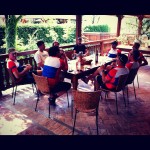 All in a hard day’s work |
 Our personalized Cutters tee’s courtesy of Greeley |
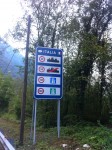 Italia! |
 |
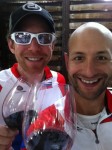 Vino! |
 The best prosciutto ever |
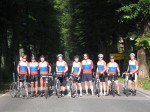 Ready to head out for the King’s Stage |
Process vs. outcome
I’ve had a few conversations recently about the right balance between process and outcome. I’ve been involved with a group that’s been very (very) process focused- which has lead to some great discussion, but has hampered action/outcome and it’s got me thinking about where the balance lies between the two.
When I was younger (and apparently somewhat more patient) I was much more process oriented. Outcome alone as the measure of success wasn’t enough – there needed to be a solid process behind it. I’m reminded of my days at a Quaker camp in Vermont where we’d hold lengthy “town meetings” to make decisions. All decisions were made by consensus and often discussions on relatively mundane topics extended for hours. But it was truly the process that mattered the most –the outcome was secondary.
I’ve also been in organizations where the opposite was true. Often there was no process at all – or only a process that was specifically designed to get to a single outcome (and worse – make us feel like we somehow had input). That was efficient in decision making, but mercurial and very few voices actually were heard (and a a result, while decisions were made quickly, they weren’t always the best decision and certainly didn’t reflect the collective expertise of the group).
But I don’t think the balance is in the middle. To me, outcome is more important and should be weighted higher. The process should support decision making (although not be designed to reach only one conclusion – there’s no benefit in that) but shouldn’t take over. Not everyone needs to be heard on every decision and there needn’t’ be “process checks” every 30 minutes. Everyone should understand going in what the process is going to look like and consistency and adherence to what you say your going to do is probably the most important aspect of making a process work.
I’m curious your experience with this.
How much should a start-up CEO make?
I was asked this question at a talk I gave to the recently graduated TechStars Boulder class and thought it deserved wider dissemination than to just the group in the room at the time. This is a loaded question and while there are many variations I do actually think there are some general norms that are followed in most cases. So here goes with some guiding principals and then below that some numbers. Keep in mind that I’m talking about Seed and Series A stage businesses.
– Pay yourself as little as you can. Cliché, of course, but true. At the seed stage the modest amount of money you have raised is best spent on product and attracting initial customers than it is on paying yourself. This advice is generally true across the organization. It’s also true that generally founders and early employees own a large portion of the business at this stage and as a result, business progress at this stage disproportionately benefits founders. So the trade-off is most beneficial to the founders and employees – including the CEO.
– Don’t starve. There’s no sense in paying yourself so little that you can’t live or will be overly stressed about paying your bills. Seed stage investors are sympathetic to varying life conditions and you don’t need to tighten the belt so much that it ends up distracting you from your focus on building a great business. Some founders are happy to live in their parent’s basement and take almost no money; others have families or student loans, etc. and can’t work for minimum wage.
– Have an open conversation with your investors about what you need. As is typically the case, you should be as transparent as you can with your investors on this topic and have a open dialogue about compensation.
– Map out a plan. As part of this open conversation be clear about what your expectations are going forward and what milestones might trigger incremental compensation (raising a larger round, getting product into the market, hitting a certain revenue target, etc.).
So what does this all translate to? I think market (and this seems to be true whether you’re in San Francisco, New York, Boulder or somewhere else) is that companies that have raised $1M or less tend to pay their CEO between $75k and $125k (skewed very much to the low end of that scale – companies that have raised less than $500k tend to top out at $75k for CEO comp). Companies that have raised between $1M and about $2.5M tend to pay their CEOs around $125k. Companies who have raised above that amount skew up from there. Not science, but these observations are based on a sample size in the many hundreds.
Linking around with LinkSmart
At the core of the Internet is the ability to connect together content. It was really this hyperlinking between pages that in many ways defined the difference between the early Internet and the bulletin boards and Usenet that preceded it. Google clearly saw the value of links, which they interpreted as people “voting” on the online content which they saw as most valuable. At the core of their search engine is the measurement of that linking activity. However while a huge amount of attention and investment has gone into tools to support publishers’ ability to create and post content and, of course, to create advertising around that content (literally around, by surrounding it in ads), publishers have lacked tools to properly support inserting, analyzing, managing and optimizing links in their content. Inserting links has remained a highly manual activity and a very static one – once a page has been created the links that were initially inserted are the links that remain.
LinkSmart is changing all that with the Total Link Management (TLM) product, which they announced today. TLM is an intuitive, scalable, automated platform that analyzes and controls keyword text linking with the goal of optimizing reader traffic flow – but all under the complete control of the publisher (no spam-like text link ads, no pop-ups). TLM works by identifying valuable keyword links within articles that have the highest performing click engagement, then utilizes the publisher’s own organic traffic to help readers find related content within their site or that of a partner or affiliate. In early results with LinkSmart’s pilot partners, the software performed 15 to 20 times better than other common traffic optimization techniques. The idea is to first give publishes insight into the links on their site and the click behavior of their site visitors. The system then gives publishers the ability to dynamically rewrite existing links, redirect traffic to different locations on their site or a partner site, suggests new words to highlight with links and gives publishers a complete view of how traffic is moving around. This is a huge opportunity for publishers to take control of their key asset – the content which they produce – and use it most effectively to better the experience for their site visitors while at the same time generating more traffic and more revenue for their business.
LinkSmart was built for publishers by a publisher. Pete Sheinbaum came up with the idea behind LinkSmart based on the experiences he had as a web publisher (Pete was the CEO of DailyCandy which was sold to Comcast a few years ago). I met Pete well before that sale and he actually worked from our office while he was at DailyCandy for a while. LinkSmart was born in the Foundry office several years ago as Pete started working on his next big idea shortly after leaving Comcast.
I’ve written in the past about the benefits of “stealth mode” as well as the debates we’ve had at Foundry around whether or not companies should remain quiet about what they are planning, or be public about it from day one. In the case of LinkSmart, they’ve taken stealth to a new level here at Foundry – spending several years refining the idea and the product and working with early publisher partners to make the TLM both extremely powerful but also easy and intuitive to use.
So welcome LinkSmart to the light of day! We’re really excited about what you are doing!
The most important provision of the JOBS Act
When the JOBS Act was passed several months ago there was much fanfare about the key provisions. Especially the raising of the number of investors that a private company could accumulate before being forced to report as a public company and the so-called “crowdfunding provision” which allows companies to raise up to $1M of private capital from an unlimited number of investors (regardless of whether they are accredited or not). The Act also changed the rules around general solicitation and advertising for certain private capital raises and eased the regulatory burden on some newly public companies.
One of the provisions that didn’t get much attention but that I felt was perhaps the most important of the Act was the provision that allowed companies to privately file an S1 registration statement with the SEC. This provision only requires companies to make their filing public 21 days prior to commencing a road-show. Prior to this, S1 filings were public as soon as they were filed – allowing anyone to see the company positioning and financial results of a potential IPO candidate. And of course by publically filing an S1, a company was declaring openly its intent to go public. The SEC review process is typically around 6 months, meaning that companies have all the public and competitive overhead of being public with none of the benefits.
The JOBS Act changed that drastically. Now companies can file privately, run the review process with the SEC in secret and only declare their intent to go public as they finalize preparations to go on the road (in effect around 5 weeks before pricing their stock). And as was just reported, many companies are taking advantage of this provision of the Act. In fact, more companies have submitted private filings with the SEC than have submitted public ones – approximately 30 in total according to VentureWire.
And with no IPO coming to market since Facebook’s challenging debut, I’d imagine that a number of the companies who made their filings privately are glad they did so…








